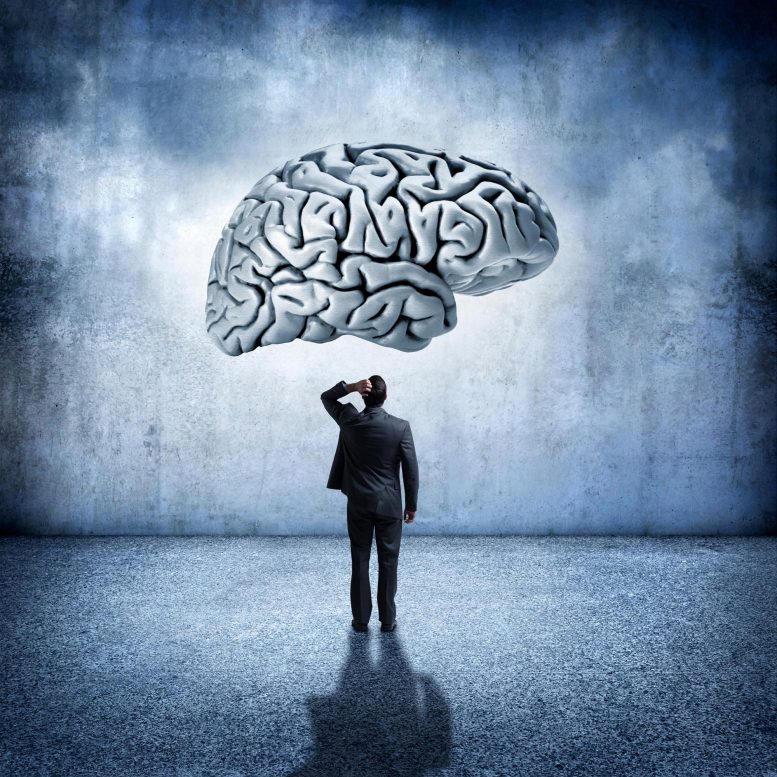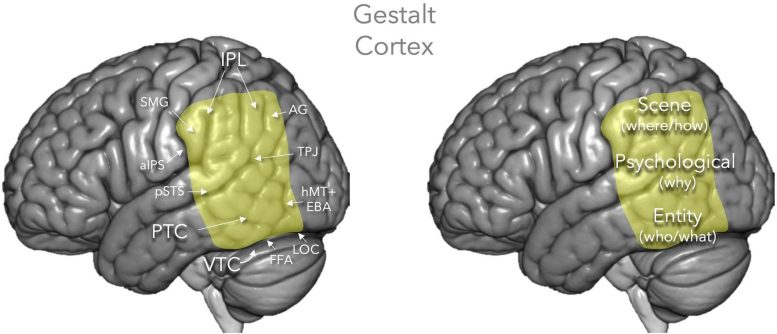
UCLA psychologist Matthew Lieberman explains why people might see things differently.
Why are we so certain that the way we view people, circumstances, and politics is correct and that the way others see them is erroneous?
According to a recent study by the University of California, Los Angeles psychology professor Matthew Lieberman, the answer resides in a part of the brain he calls the “gestalt cortex,” which helps humans make sense of ambiguous or incomplete information — and dismiss alternative interpretations.
The study, which was based on an analysis of over 400 prior studies, was published in the journal Psychological Review.
Naive Realism: Why We See Ourselves as Right and Others as Wrong
People often mistake their own perceptions of other individuals and events for an objective fact as opposed to only being their own interpretation. People who experience this “naive realism” phenomenon think they should have the final word on the world around them.
“We tend to have irrational confidence in our own experiences of the world, and to see others as misinformed, lazy, unreasonable or biased when they fail to see the world the way we do,” Lieberman said. “The evidence from neural data is clear that the gestalt cortex is central to how we construct our version of reality.”

He believes that the most overlooked cause of conflict and mistrust between people and organizations is naive realism.
“When others see the world differently than we do, it can serve as an existential threat to our own contact with reality and often leads to anger and suspicion about the others,” Lieberman said. “If we know how a person is seeing the world, their subsequent reactions are much more predictable.”
While the question of how people make sense of the world has been an enduring topic in social psychology, the underlying brain mechanisms have never been fully explained, Lieberman said.
Mental acts that are coherent, effortless, and based on our experiences tend to occur in the gestalt cortex. For example, a person might see someone else smiling and without giving it any apparent thought, perceive that the other person is happy. Because those inferences are immediate and effortless, they typically feel more like “seeing reality” — even though happiness is an internal psychological state — than they do like “thinking,” Lieberman said.
“We believe we have merely witnessed things as they are, which makes it more difficult to appreciate, or even consider, other perspectives,” he said. “The mind accentuates its best answer and discards the rival solutions. The mind may initially process the world like a democracy where every alternative interpretation gets a vote, but it quickly ends up like an authoritarian regime where one interpretation rules with an iron fist and dissent is crushed. In selecting one interpretation, the gestalt cortex literally inhibits others.”
Previous research by Lieberman has shown that when people disagree face to face — for example on a political issue — activity in their gestalt cortices is less similar than it is for people who agree with one another. (That conclusion was supported by a 2018 study in the journal Nature Communications. UCLA psychologist Carolyn Parkinson and others found that similar neural patterns in the gestalt cortex were strong predictors of who was friends with whom.)
Gestalt was a German school of perceptual psychology whose motto was, “The whole is greater than the sum of the parts.” The approach focused on how the human mind integrates elements of the world into meaningful groupings.
The gestalt cortex is located behind the ear, and it is situated between the parts of the brain responsible for processing vision, sound and touch; those parts are connected by a structure called the temporoparietal junction, which is part of the gestalt cortex. In the new study, Lieberman proposes that the temporoparietal junction is central to conscious experience and that it helps organize and integrate psychological features of situations that people see so they can make sense of them effortlessly.
The gestalt cortex isn’t the only area of the brain that enables people to quickly process and interpret what they see, he said, but it is an especially important one.
Using Neurosurgical Recordings To Understand the “Social Brain”
In a separate study, published in April in the journal Nature Communications, Lieberman and colleagues addressed how, given our complex social worlds, we are able to socialize with relative ease.
Using the first mass-scale neurosurgical recordings of the “social brain,” Lieberman, UCLA psychology graduate student Kevin Tan and colleagues at Stanford University showed that humans have a specialized neural pathway for social thinking.
Lieberman, author of the bestselling book “Social: Why Our Brains Are Wired to Connect,” said humans are social by nature and have an exceptional capacity for assessing the mental states of others. That ability requires the brain to process a large number of inferences from a vast array of idiosyncratic cues. So why does that process often feel so effortless compared to simple tasks like basic arithmetic?
Clear answers have been elusive for those who study social neuroscience. One culprit could be scientists’ reliance on functional magnetic resonance imaging, which is effective at scanning where brain activity occurs, but less effective at capturing the timing of that activity.
Researchers employed a technique called electrocorticography to record brain activity at millisecond and millimeter scales using thousands of neurosurgical electrodes. They found that a neurocognitive pathway that extends from the back to the front of the brain is especially active in areas closer to the front when people think about the mental states of others.
Their findings suggest that the temporoparietal junction may create a fast, effortless understanding of other people’s mental states, and that another region, the dorsomedial prefrontal cortex, may be more involved in thinking things through more slowly and carefully.
References: “Seeing minds, matter, and meaning: The CEEing model of pre-reflective subjective construal” by Matthew D. Lieberman, July 2022, Psychological Review.
DOI: 10.1037/rev0000362
“Similar neural responses predict friendship” by Carolyn Parkinson, Adam M. Kleinbaum and Thalia Wheatley, 30 January 2018, Nature Communications.
DOI: 10.1038/s41467-017-02722-7
“Electrocorticographic evidence of a common neurocognitive sequence for mentalizing about the self and others” by Kevin M. Tan, Amy L. Daitch, Pedro Pinheiro-Chagas, Kieran C. R. Fox, Josef Parvizi and Matthew D. Lieberman, 8 April 2022, Nature Communications.
DOI: 10.1038/s41467-022-29510-2
Never miss a breakthrough: Join the SciTechDaily newsletter.
4 Comments
“People who experience this “naive realism” phenomenon think they should have the final word on the world around them.”
That looks like a description of political Progressives who are working to change society.
Spot on, Clyde!
People are so busy on autopilot; they refuse to see things as they are and just overthink and label, label, label.
Stop thinking and see things just as they are, without the blinders of prejudice or trying to conceptualize something, putting it in a box with a label and limits, “This is this and this an ONLY be this.”
Conscious awareness is looking at something or someone without a label. When I began doing this, it was like listening to a record collection no longer on a “Mickey Mouse” player, but a $20K audiophile system – you hear things you never knew were there before. Seeing the world consciously is seeing that which you never saw before….. because you didn’t impose a conceptual limit on everything and every one.
Being on autopilot can save people time to think about more important things than just routine, mundane activities. Reacting reflexively to a ‘rustle in the leaves’ may save one’s life. The problem is that most people don’t use the time to good advantage. They do everything on autopilot.
A dictum I try to live by is, before doing some conscious act, consider what the world would be like if everyone were to do the same thing.